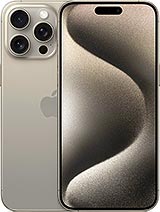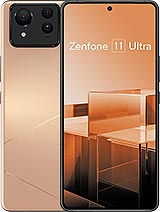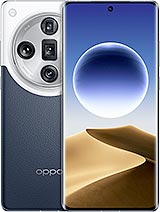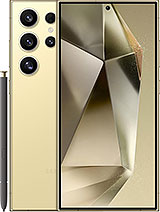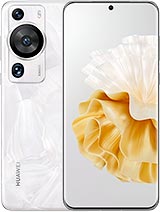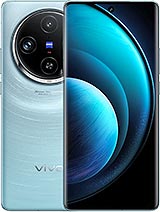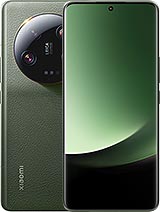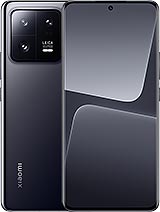Xiaomi 14 Ultra review

Bright 6.73-inch OLED with 12-bit color and Dolby Vision
The Xiaomi 14 Ultra features a 6.73-inch OLED display with a 1,440x3,200px resolution and a 1-120Hz refresh rate capability - the same numbers as on the 13 Ultra. It's once again a 12-bit panel (so, theoretically, 68 billion colors) and HDR10+ and Dolby Vision are both supported.
The official specs mention both 1920Hz PWM for dimming, as well as DC dimming, so the panel likely employs both methods depending on the brightness level, which was also apparently the case with the previous model.
Xiaomi promises an increase in peak brightness (from 2,600 to 3,000nits) and that's the only immediate difference in the specs, inconsequential as it may be.

In our testing, we did pick up a small increase in brightness compared to the older model when the phone was placed under bright light and adaptive brightness was enabled. The 1,281 nits we measured aren't industry-leading or anything, but the number is excellent nonetheless.
Xiaomi is also now letting you flip a toggle in settings to get a 200-ish-nit brightness boost when operating the slider manually - we got 710nits with the 'Sunlight mode' setting enabled and 493nits with it turned off (which was the ballpark of the 13 Ultra's manual result).
Refresh rate
Refresh rate handling is rather straightforward on the 14 Ultra. There's the usual adaptive behavior, and the phone will dial down to 10Hz (most of the time) or 1Hz (in some instances) when you're not interacting with it and it's displaying static content. Dedicated refresh rate modes will be engaged for the respective video frame rates. Games that support high frame rates will be allowed to roam free and the phone will stay in 120Hz mode for those.

The 60Hz and 120Hz settings act as ceilings and the adaptive behavior will still be in place, just like in the Default mode (though the 120Hz mode might be a little more aggressive at maintaining 120Hz).
Streaming and HDR
The 14 Ultra supports HDR10+ and Dolby Vision standards and we got HDR streams from both Netflix and YouTube. The Widevine L1 compliance means that DRM-protected content can be streamed at the maximum available resolution (typically 1080p).
The 14 Ultra and its HyperOS also support Google's Ultra HDR standard for capturing and displaying 10-bit images from compatible phones across different apps. You'll get boosted highlights in your own photos in the in-house gallery, as well as in Google Photos, and the effect can also be observed with other compliant photos in Chrome.
Xiaomi 14 Ultra battery life
Our new Active Use Score is an estimate of how long the battery will last if you use the device with a mix of all four test activities. You can adjust the calculation based on your usage pattern using the sliders below. You can read about our current battery life testing procedure here. For a comprehensive list of all tested devices so far, head this way.
The global version of the Xiaomi 14 Ultra is equipped with a 5,000mAh battery, which is the same capacity as the one on the 13 Ultra from last year. The Chinese 14 Ultra is treated to a minor upgrade - to 5,300mAh, but we don't get those extra mAhs.

Much like the 13 Ultra, the 14 Ultra doesn't exactly win our hearts with its endurance, though it is generally a step up. The most significant improvement is in the gaming test, where the new model has added 33% to the underwhelming 5 hours of the 13 Ultra - not enough to outlast competitors, but at least no longer miles behind them.
The 11 hours in the web browsing test make for an okay showing, and so too is the call time, but the video playback longevity is below average. Overall, the 14 Ultra's battery life isn't class-leading, but it's not a deal-breaking result either.
Charging speed
The 14 Ultra ships with the same 90W HyperCharge adapter that we received with the 13 Ultra. Xiaomi says that the phone should be able to charge from empty to full in 33 minutes and that's more or less what our experience was. Our power meter showed a momentary 78W value but was happier to hover around the 75W mark where it stayed for about the first 3 minutes of the process before the power gradually dropped - as expected.
As before, beware that you must have the "Boost charging speed" toggle enabled in settings to get the highest possible speed - out of the box, it's disabled.

Compared to the predecessor, the 14 Ultra was slightly slower to the 15-minute mark, but was already ahead at the half-hour checkpoint and also made it to 100% slightly faster. The 13 Pro from last year with its 120W charging was noticeably faster, we'll admit, and a few of this year's flagships also have an edge on the 14 Ultra. Still, we find no grounds for complaint when it comes to charging speed.
We also tried a third-party 65W USB Power Delivery adapter, and that got us to 50% in 30 minutes and 100% in 80 minutes - not impressive, but a decent result for those times when you've forgotten the proprietary adapter.
The 14 Ultra supports wireless charging, and Xiaomi rates it at 80W. According to the company's data, a full charge from flat should take 46 minutes with the right stand (a brand new product, launched alongside the Ultra).
We don't doubt that something close to that number is possible in real life, since their wired charging speed claims were pretty accurate to our own measurements. That said, we haven't been able to test it.
It's worth pointing out that the stand doesn't ship with an adapter, and its specs say it requires a 120W power brick to reach the maximum power output. Since the phone itself comes with a 90W adapter, you'll need to factor in the purchase of an extra 120W adapter to make the most out of the stand. On the other hand, even with the supplied 90W unit hooked up to the stand, you'd probably be able to get pretty decent speeds.
Speaker test
The Xiaomi 14 Ultra carries over the speaker setup from the previous model. It features one unit firing out the bottom, and another one at the top directing sound both upward through four holes on the top plate and sort of forward/upward through a slit at the edge of the display glass - that would be the earpiece.



Bottom speaker • Top speaker • Earpiece slit
The top speaker gets the left channel in vertical orientation, and channels are switched to match the landscape orientation. The two speakers each output their respective channel but also an attenuated version of the opposite channel.
In our testing, the 14 Ultra matched the previous model's 'Very Good' rating for loudness, with an ever so slightly higher numerical result. Essentially, all potential competitors are in the same ballpark for loudness, though the Galaxy S24 Ultra does manage to make a grander impression.
The new phone improves on its already nice-sounding predecessor with a slightly livelier midrange, while maintaining good bass levels and clean treble. Neither the vivo or the Oppo are any serious competition, to our ears at least, but if forced to pick, we'd still probably prefer the Galaxy.
Use the Playback controls to listen to the phone sample recordings (best use headphones). We measure the average loudness of the speakers in LUFS. A lower absolute value means a louder sound. A look at the frequency response chart will tell you how far off the ideal "0db" flat line is the reproduction of the bass, treble, and mid frequencies. You can add more phones to compare how they differ. The scores and ratings are not comparable with our older loudspeaker test. Learn more about how we test here.
Reader comments
- Misterman
- 19 Apr 2025
- M8r
You should add the battery usage while using the camera.
- Murphiel34
- 05 Feb 2025
- xjH
Those the Xiaomi 14 ultra turn off camera when the phone is hot when taking photos under the sun
- Vilsilav
- 02 Feb 2025
- nbr
Important! The sound you're all hearing from the backside of the phone is the OIS - Opticall image stabilization, or why your camera is not shkaing like crazy when your hands naturally are not stable. It's good that you're hearing it...
